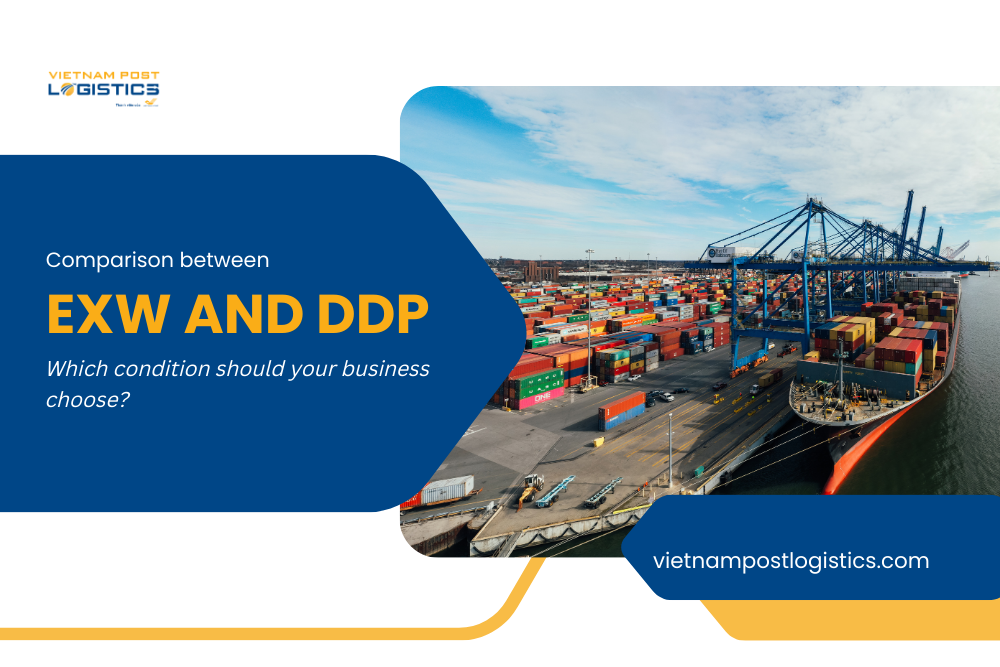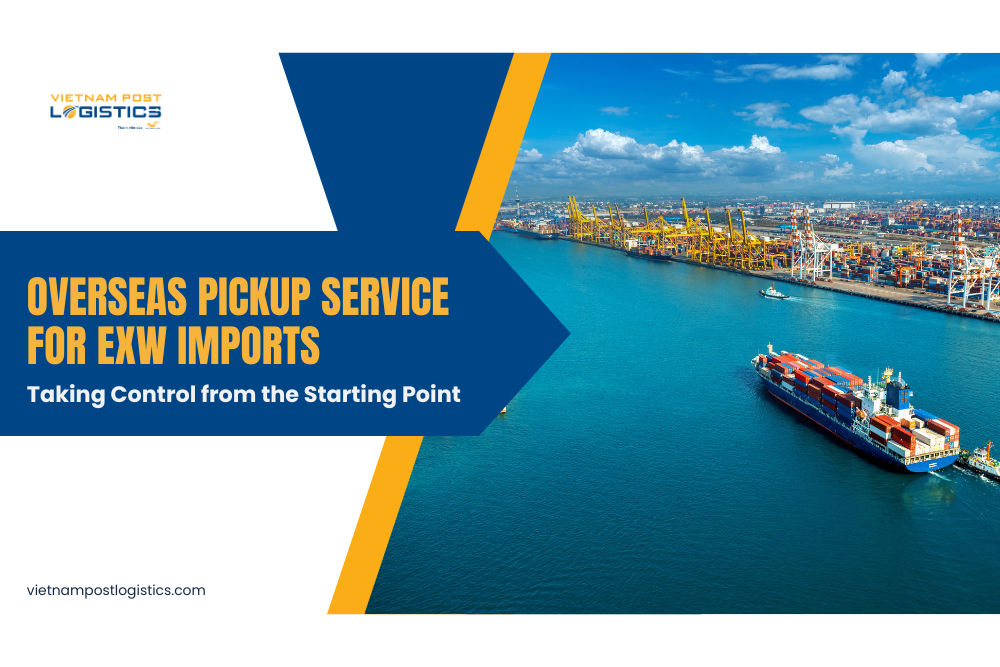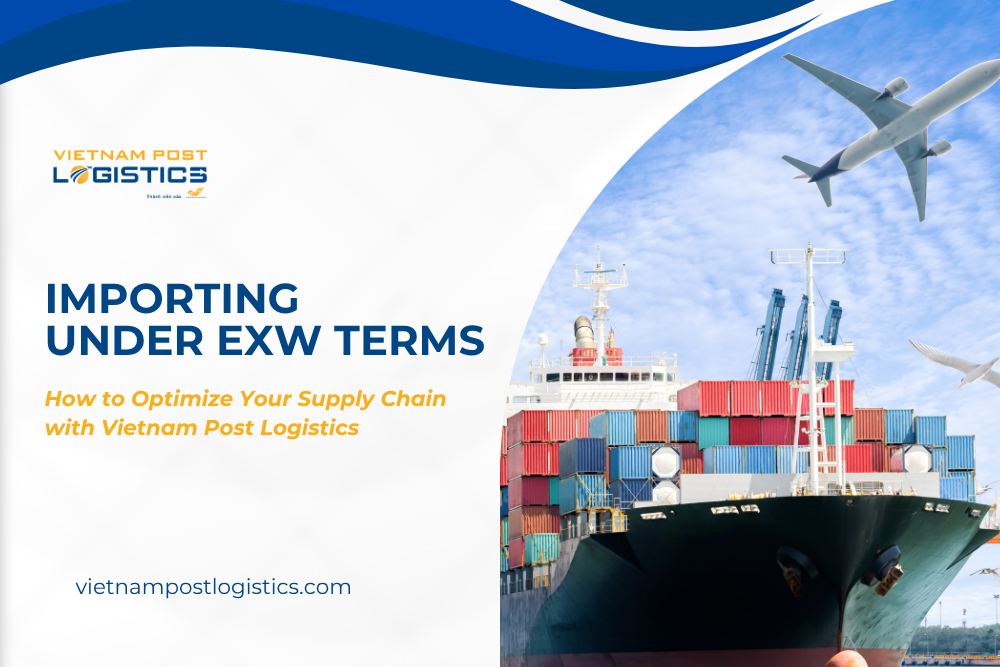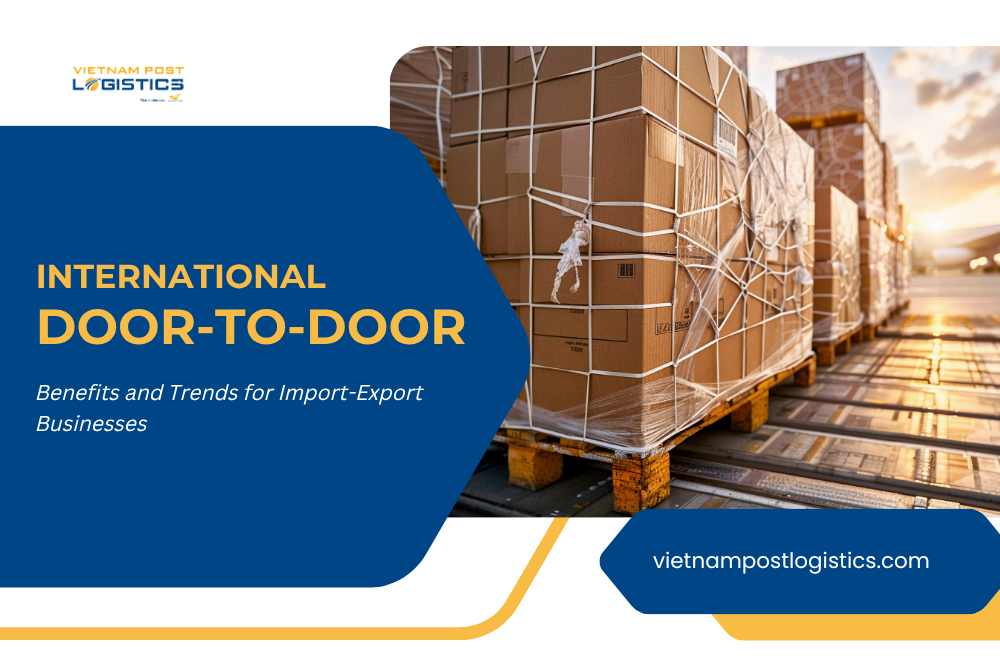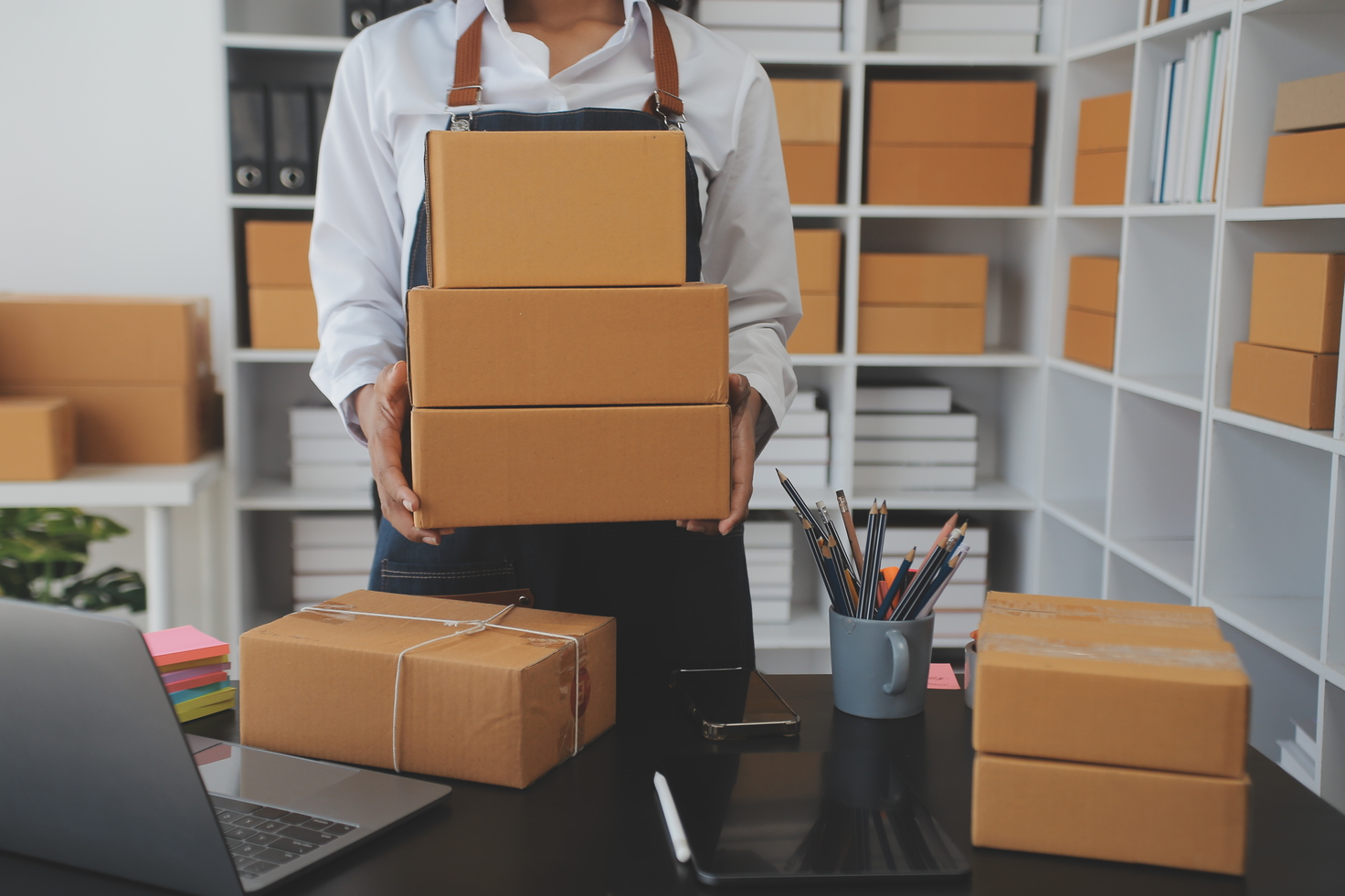
[Updated] 5 E‑commerce Fulfillment Trends in 2025
 Vietnam Post Logistics
Vietnam Post Logistics
 19 June, 2025
19 June, 2025
 5 phút đọc
5 phút đọc
In today’s digital age, fulfillment – also known as order fulfillment services – is becoming a key factor for e-commerce businesses to maintain a competitive advantage. The explosion of e-commerce has led to the need for fast, accurate, and environmentally friendly order processing.
So, what are the prominent trends of fulfillment services in 2025?
Let’s explore 5 important trends that businesses need to pay attention to to adapt and thrive in the globalized market.
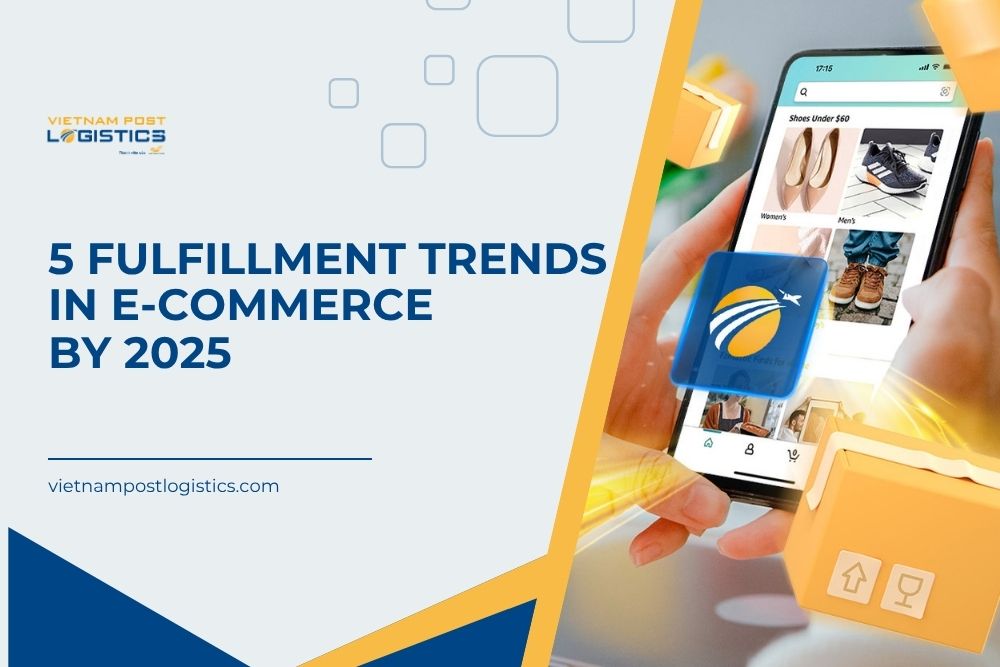
Warehouse Automation With New Technology (Robotics, AI)
Warehouse automation is no longer a novel concept in today’s market. Still, it can be said that 2025 will witness a significant leap in technology, with the increasing popularity of autonomous vehicles (AGVs), order picking robots (AMRs), and artificial intelligence (AI) in warehouse management.
- Amazon Robotics deploys more than 750,000 Kiva robots in fulfillment centers in the US, increasing productivity by 2-3 times compared to manual labor.
- JD.com in China builds a fully automated warehouse in Shanghai, processing more than 200,000 orders/day with an operating team of only… 4 people.
The benefits that this trend brings to businesses:
- Reduce labor costs by 30-50% thanks to automation.
- Increase order processing accuracy from 90% to 99.9%.
- Meet sudden demand increases, especially during peak seasons.
Big Data & Real‑Time Inventory Analysis
In a volatile business environment, using big data to analyze inventory data in real time will be the key to helping businesses reduce costs and optimize the flow of goods.
- Zara has applied a data analysis system to accurately manage inventory at each store, thereby minimizing inventory errors and ensuring products are always available according to demand.
- Maersk uses AI to analyze transportation data and forecast the supply chain, helping to shorten the time of goods transportation by up to 20%.
In Vietnam, e-commerce businesses can integrate warehouse management software (WMS) with ERP software, taking advantage of data from sales, inventory, and transportation systems to make effective decisions on importing and transferring goods.
Omnichannel Fulfillment
Today, modern customers shop not just through one channel, but across multiple platforms (omnichannel). This requires a seamless fulfillment system between warehouses, orders, transportation and customer care, ensuring orders are processed quickly and accurately, regardless of the channel.
- Nike deployed Omnichannel Fulfillment in the US, allowing customers to order online and pick up at the store or have it delivered from the nearest warehouse. The result: increased online sales by 30% and reduced delivery time to <24 hours.
- In Vietnam, platforms such as TikiNOW or Lazada have deployed multi-channel fulfillment with warehouses distributed throughout major cities, delivering within the city within 2-4 hours.
Implementation solutions:
- Integrate OMS (Order Management System) and WMS (Warehouse Management System) systems to synchronize orders and inventory data.
- Build mini warehouses (dark stores) in areas near customers to shorten delivery time.
Green Fulfillment – Sustainable Logistics
According to a McKinsey report, 65% of consumers are willing to pay more for products with environmentally friendly packaging. Green fulfillment not only protects the planet but is also a sustainable branding strategy.
- Unilever aims to reduce 50% of plastic in packaging by 2025.\
- DHL develops the GoGreen service using electric vehicles and optimizing delivery routes, helping to reduce CO2 emissions by up to 30%.
- Some modern warehouses in Vietnam have started applying solar energy, reusing rainwater, and recycling packaging.
What should businesses do?
- Use biodegradable packaging, reduce single-use plastic.
- Optimize packaging, reduce package size.
- Invest in environmentally friendly delivery vehicles (electric vehicles, hybrid vehicles).
Speed Up Order Processing And Same-Day Delivery
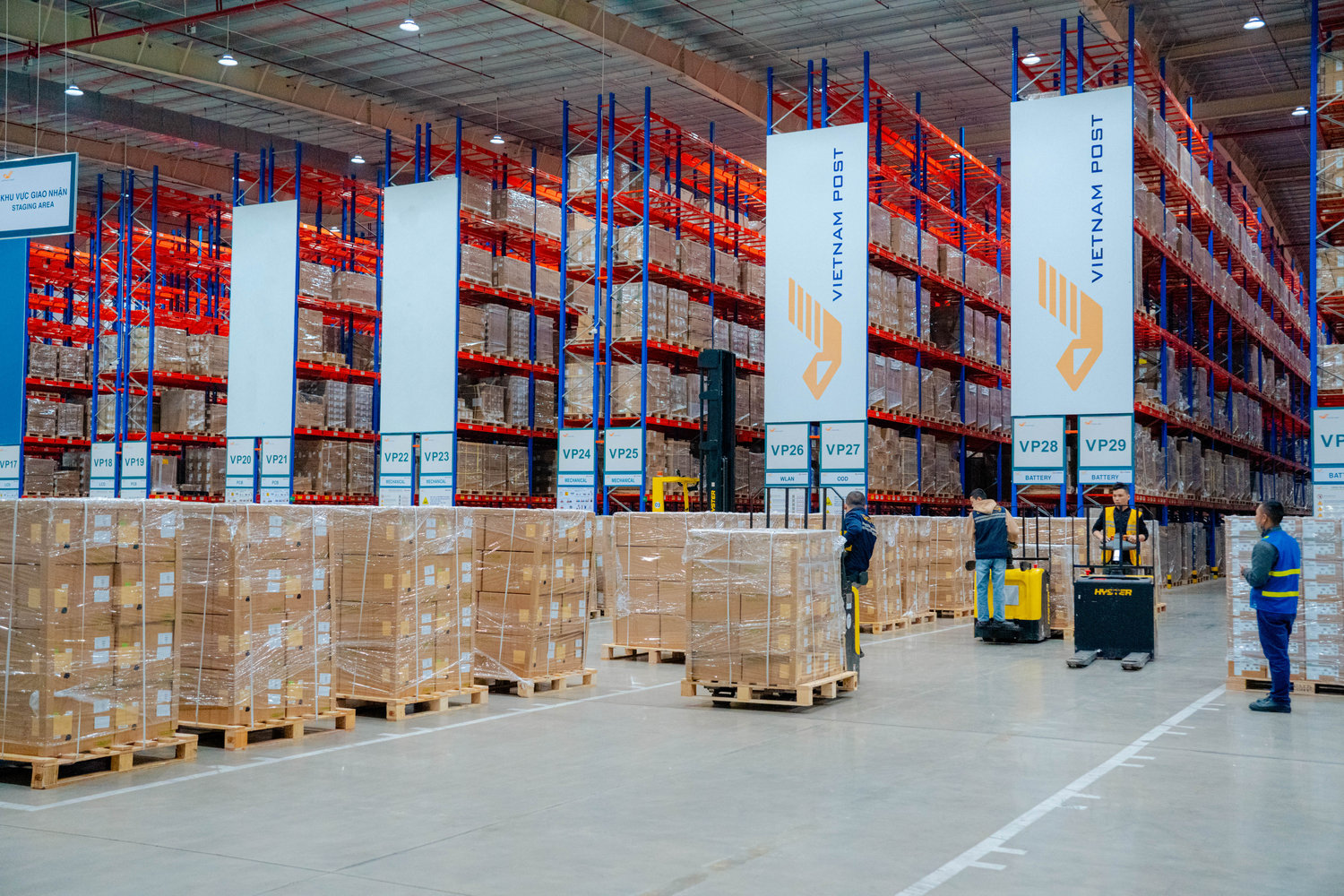
In modern e-commerce, customers not only want fast delivery, but also same-day or even 2-hour delivery. Therefore, fulfillment must be comprehensively optimized: from warehousing, packaging, to shipping.
- Alibaba Cainiao develops a mini-warehouse network in China, meeting a 2-hour delivery in major cities.
- Amazon Prime offers a 2-hour delivery service, increasing customer retention rate by 60%.
- In Vietnam, ShopeeExpress and Giao Hang Nhanh (GHN) are expanding their fulfillment system to meet same-day delivery in Ho Chi Minh City and Hanoi.
Strategy for businesses:
- Allocate warehouses at strategic locations near customers.
- Use route optimization to shorten delivery time.
- Integrate a shipping tracking application to improve customer experience.
Fulfillment will continue to be the mainstay of e-commerce in 2025. Businesses need to quickly grasp the 5 main trends: warehouse automation, big data exploitation, multi-channel integration, moving towards green logistics, and accelerating order processing. Applying these solutions will help businesses:
- Increase productivity, reduce costs.
- Improve customer experience.
- Build sustainable brands, create competitive advantages.
The above article has provided the 5 latest e-commerce Fulfillment trends in 2025. Hopefully, the article will provide e-commerce businesses with more useful knowledge to develop the right business strategies in the digital age.
Contact Vietnam Post Logistics to receive useful advice on fulfillment and our comprehensive logistics services.






